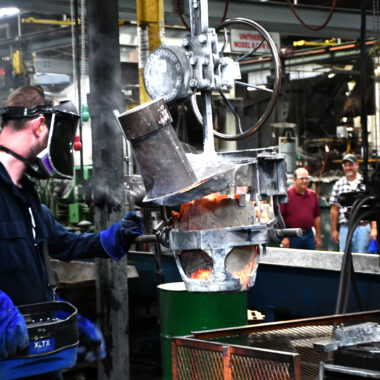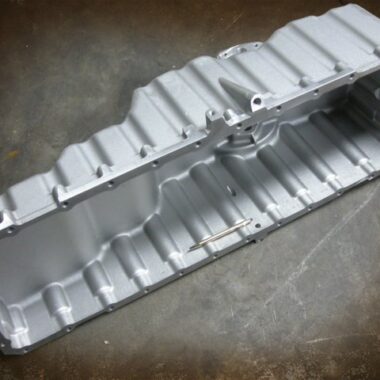Aluminum Casting Mastery: Techniques to Elevate Your Production Refine
Aluminum Casting Mastery: Techniques to Elevate Your Production Refine
Blog Article
Dive Into the Globe of Light Weight Aluminum Casting: Understanding the Various Approaches
Aluminum spreading is a basic process in the production sector, with different approaches employed to produce exact and complex elements. From the traditional sand casting approach to the innovative die casting process, each technique provides special benefits depending on the requirements of the project.
Sand Casting Technique
Sand casting, a widely-used technique in light weight aluminum casting processes, includes developing mold and mildews made of compacted sand for pouring liquified steel. This approach is cost-efficient and highly versatile, making it a popular option for different sectors. The procedure starts with the production of a pattern, generally constructed from timber or steel, which is after that pushed right into the sand to leave an impact. The sand mixture, generally silica sand mixed with a binder like clay, is firmly packed around the pattern to form a mold cavity. Once the mold is ready, it is securely positioned in a flask and molten light weight aluminum is put right into the tooth cavity.
After the metal has actually cooled down and solidified, the sand mold is escaped to disclose the aluminum casting. Sand spreading permits the production of complex forms and big components that may be challenging or expensive to produce utilizing other methods. It is additionally a lasting method as the sand can be recycled and made use of several times, decreasing waste in the spreading procedure.
Permanent Mold And Mildew Method

One substantial benefit of the Irreversible Mold And Mildew Strategy is the enhanced dimensional accuracy it provides. The metal mold permits tighter resistances and better information in the last aluminum castings compared to sand spreading approaches. This accuracy makes it a favored option for applications where tight dimensional control is essential, such as in the aerospace and automotive sectors.

Die Casting Process

Financial Investment Casting Technique
Using a precision spreading technique, Investment Casting Strategy includes creating detailed aluminum components by putting molten steel into a ceramic mold and mildew. This procedure, also recognized as lost-wax casting, starts with the development of a wax pattern of the desired component (aluminum casting).
The next step includes putting the molten light weight aluminum right into the ceramic mold and mildew. The aluminum fills the dental caries left by the wax pattern, taking its shape precisely. This technique is favored for its ability to generate complex forms with high accuracy and a smooth surface area finish. Financial investment casting is generally made use of for manufacturing elements in industries where complex designs and limited resistances are called for, such as aerospace, automobile, and clinical equipment. The adaptability and accuracy of the Investment Casting Technique make it a valuable method on the planet of aluminum casting.
Lost Foam Spreading Approach
Having actually explored the complex precision of useful reference Investment Casting Strategy, the focus now shifts to the innovative method of Lost Foam Spreading in light weight aluminum element manufacturing. Lost Foam Casting, also recognized as evaporative pattern spreading, is a contemporary method where a foam pattern of the desired component is produced and then coated with a refractory product.
Additionally, Lost Foam Spreading is a cost-effective procedure as it reduces the requirement for cores and permits for the production of light-weight components. In spite of its advantages, Lost Foam Casting calls for careful control of the casting procedure to make sure and prevent problems top quality components.
Conclusion
In conclusion, aluminum spreading offers a range of approaches such as sand casting, long-term mold and mildew technique, pass away spreading, investment casting, and lost foam spreading. Each approach has its own advantages and applications, making light discover this weight aluminum casting a functional and widely used process in different sectors. Understanding the differences between these her latest blog techniques is crucial in selecting the most appropriate casting method for details manufacturing needs.
Sand casting, a widely-used method in aluminum casting processes, involves creating molds made of compacted sand for pouring molten metal. aluminum casting.The Permanent Mold Technique, like sand casting, is another prevalent method employed in aluminum casting processes, offering distinctive benefits in terms of mold and mildew reusability and dimensional precision. The steel mold and mildew enables for tighter tolerances and finer details in the last light weight aluminum spreadings contrasted to sand casting methods. The two main kinds of die spreading are chilly chamber die casting and hot chamber pass away spreading, each appropriate for different types of light weight aluminum alloys.In verdict, aluminum casting offers a selection of approaches such as sand spreading, long-term mold strategy, pass away casting, investment spreading, and shed foam casting
Report this page